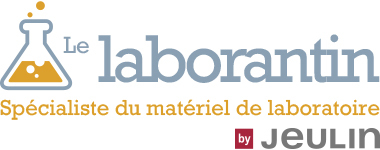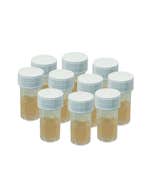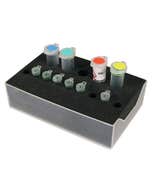Myopathy Kit - Dystrophin Electrophoresis (simulation)
Duchenne and Becker myopathies result from mutations in the DMD gene, which encodes dystrophin, a protein essential for the integrity of muscle fibers. Dystrophin, composed of 3,685 amino acids and weighing 427 kDa, is one of the largest genes in the human genome, with approximately 2.3 million base pairs.
In Duchenne disease, dystrophin is absent due to mutations that disrupt the reading frame. In contrast, in Becker disease, dystrophin is present but either in reduced quantity or altered, due to mutations that do not disturb the reading frame, allowing for partial synthesis.
This kit aims to distinguish the two myopathies by their difference in migration during electrophoresis (compared to a healthy subject).
Electrophoresis is performed in agarose gel, compatible with any type of DNA electrophoresis. In this kit, dystrophin solutions are simulated. The kit contains simulated dystrophin samples and reagents for migration (agarose, TAE buffer). All these elements are completely safe.
Depending on the type of electrophoresis used, it is possible to perform:
- 10 gels (15 ml) with the compact system phorEasy Jeulin (0.45 g of agarose / 3% gel)
- 5 gels (40 ml) with the standard DNA/protein tanks Jeulin (1.2 g of agarose / 3% gel)
Format: 40 tests (pairs) or 80 deposits
Migration time: 6 min
Storage: 12 months at room temperature
Separation of DNA fragments: 3% agarose gel (without gel green)
The kit consists of:
- Microtube 1: simulated dystrophin protein solution from a subject with Duchenne muscular dystrophy
- Microtube 2: simulated dystrophin protein solution from a subject with Becker muscular dystrophy
- Microtube 3: simulated dystrophin protein solution from a healthy subject
- Agarose (6 g)
- TAE buffer 10X (2 x 100 ml equivalent to 2 L of 1X TAE)
| Thématiques | Analysis of proteins - pigments |











